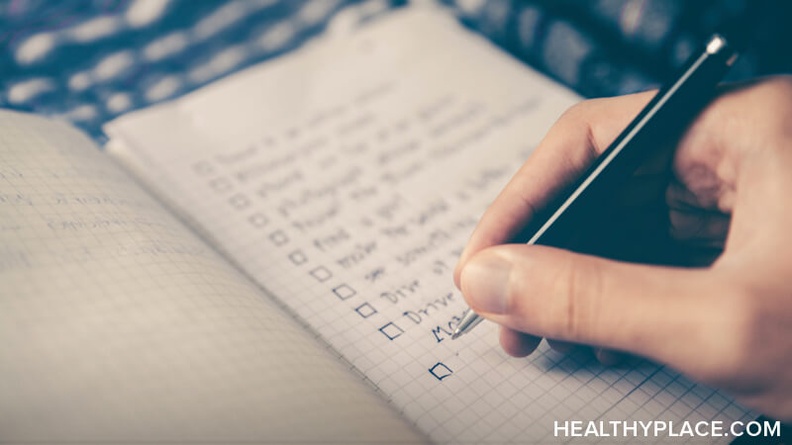Creating Your Self-Harm Care Plan

The year 2021 has now officially kicked off, and many of us have set out to become self-harm-free. However, New Year's resolutions alone won't be enough to get us there. It's crucial to develop a practical self-harm care plan that you can reach out for in time of crisis.
Why Developing a Self-Harm Care Plan Is Important
Planning and organizing may seem daunting, but it's helpful in many areas of life. Whether you want to get fit, learn a new language, or work on another self-development goal, breaking it down into smaller tasks can help you get there.
Developing a self-harm care plan is similar. The key is to recognize your self-harm triggers and replace them with realistic mini-goals -- or coping skills. This way, you'll be able to control your self-harm urges and deal with them quickly next time you feel like hurting yourself. You can even save your plan on your smartphone so that you can read it whenever a crisis strikes.
What to Include in Your Self-Harm Care Plan
Your self-harm care plan should be unique to your needs, so the tips below might not work for you. However, the guidelines and examples below are a good place to start.
First, make a list of any warning signs that usually precede your self-injury. For instance, you might experience racing thoughts, negative self-talk, or feelings such as sadness, anger, or withdrawal.
Then, assign a task to each of these emotions. Some examples might include:
- Replacement behaviors: If you need a physical release, you can try snapping a rubber band against your skin, holding a piece of ice, or taking a short, cold shower.
- Mindfulness: Try some breathing exercises and calming affirmations, such as: "I am here, I am still." You can also use a meditation app or listen to soothing music to help you relax.
- Exercise: If you're feeling restless, exercising or going for a brisk walk could help. You can also choose more gentle forms of exercise, such as yoga.
- Journaling: Writing down your feelings can often help, especially if you try to analyze your emotions on paper.
- Art: Painting, coloring, or other forms of art can be an excellent distraction.
- Music: You can also turn on your favorite song, dance, and sing to it. You might feel silly or even laugh, but that's the goal.
These are just common examples, but the sky is the limit as to what you can include in your self-harm care plan. Remember, it should be something that you know will work for you.
When All Else Fails in Your Self-Harm Care Plan, Call Someone
Finally, prepare a shortlist of trusted friends or family members that you can call for help. Tell them about your self-harm care plan so that they know they can support you. If you don't have anyone around you, please reach out for clinical help or call an emergency line, such as the National Suicide Prevention Lifeline. Sometimes talking to a complete stranger can really help.
Do you have a self-harm care plan in 2021? What did you include in it? Let me know in the comments.
APA Reference
Halas, M.
(2021, January 25). Creating Your Self-Harm Care Plan, HealthyPlace. Retrieved
on 2025, November 29 from https://www.healthyplace.com/blogs/speakingoutaboutselfinjury/2021/1/creating-your-self-harm-care-plan